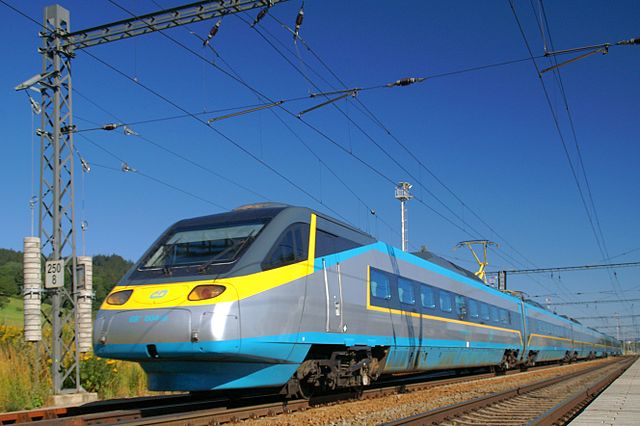The KiHa 201 series (キハ201系) is a tilting diesel multiple unit (DMU) train type operated by Hokkaido Railway Company on Sapporo area suburban services in Hokkaido, Japan since 1997. The KiHa 201 trains are designed to work in multiple with 731 series electric multiple unit (EMU) sets with which it shares numerous features, including appearance, interior layout, bodyshell and control systems. These daily interworkings are the only diesel-electric multiple working in Japan. To allow them to work alongside faster and more powerful EMUs, KiHa 201 units are uniquely fitted with pneumatic tilting bogies designed by Kawasaki Heavy Industries and used on KiHa 261 series express trains.
KiHa 201 series in January 2010
KiHa 201 series DMU running in multiple with a 731 series EMU in January 2009
A tilting train is a train that has a mechanism enabling increased speed on regular rail tracks. As a train rounds a curve at speed, objects inside the train experience centrifugal force. This can cause packages to slide about or seated passengers to feel squashed by the outboard armrest, and standing passengers to lose their balance, or in such excessive speeds, could even cause the train to derail. Tilting trains are designed to counteract this by tilting the carriages towards the inside of the curve, thus compensating for the g-force. The train may be constructed such that inertial forces cause the tilting, or it may have a computer-controlled powered mechanism.
A Japanese KiHa 283 series tilting DMU, which can tilt up to 8° (6° in normal operation)
A ČD Class 680 Pendolino train in July 2006
A Swiss SBB RABDe 500 on the Hauenstein railway line in May 2007
An ICE T (DB class 411) leaves a curve, showing cars tilted to different degrees.






